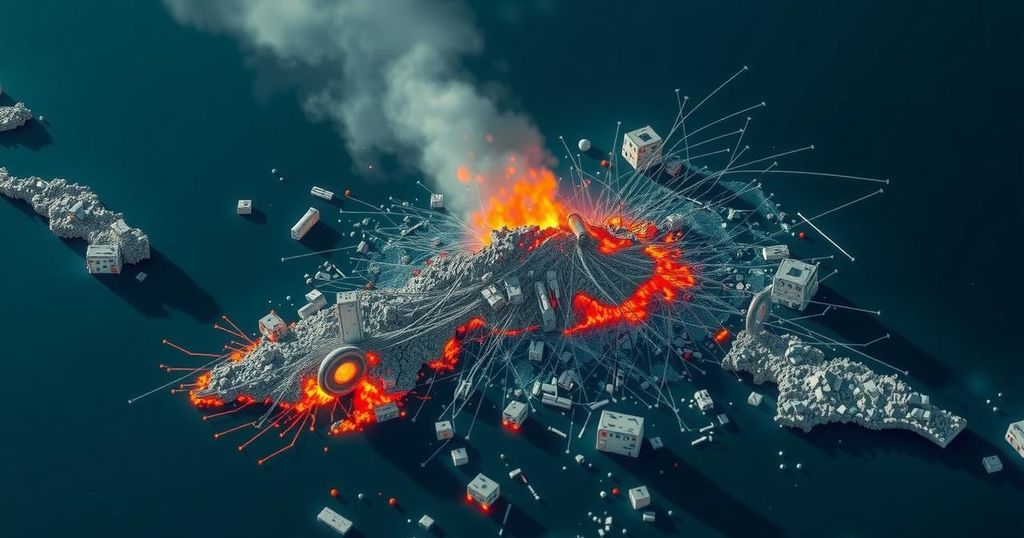A 6.8 magnitude earthquake struck eastern Cuba after hurricanes and blackouts left the island’s residents in distress. The quake’s epicenter was near Bartolomé Masó, affecting cities like Santiago de Cuba. Fortunately, there were no immediate reports of damage or injuries. The earthquake follows a period marked by severe hurricanes and ongoing blackouts, contributing to public discontent and protests.
On Sunday, a 6.8 magnitude earthquake struck eastern Cuba, impacting an island already grappling with the aftermath of recent hurricanes and blackouts. According to the United States Geological Survey, the quake’s epicenter was approximately 25 miles south of Bartolomé Masó, with tremors felt in major cities, notably Santiago de Cuba. Although there were no immediate reports of injuries or significant damage, local residents experienced considerable distress, particularly in Santiago, Cuba’s second-largest city. Among those affected, 76-year-old Yolanda Tabío shared her experience, stating that many residents took to the streets and remained in their doorways. She recounted feeling at least two aftershocks and noted that despite the quake’s intensity, she had not heard of any property damage among friends or family. “You had to see how everything was moving, the walls, everything,” she remarked to The Associated Press, encapsulating the fear felt throughout the region. This earthquake follows a series of natural disasters that have placed additional strain on the Cuban population. Recently, Hurricane Rafael, classified as a Category 3 storm, devastated western Cuba. Its impact led to widespread power outages and the destruction of numerous homes, displacing hundreds of thousands. Prior to the hurricane, Cuba had already faced prolonged blackouts due to an ongoing energy crisis, paired with the destructive force of another hurricane in October that resulted in multiple casualties. These compounding disasters have contributed to a growing sense of discontent among the populace, sparking protests as citizens confront severe living conditions exacerbated by environmental challenges and infrastructure issues.
Cuba has faced an array of challenges recently, including hurricanes that have caused significant damage and disruption. The energy crisis has led to frequent blackouts, with citizens expressing their frustrations through protests. As these struggles continue, the recent earthquake adds another layer of difficulty for a populace already under siege from natural calamities and infrastructural failures. Understanding these events is crucial for comprehending the current socio-economic landscape of the island.
In summary, the 6.8 magnitude earthquake that shook eastern Cuba compounds the existing difficulties for a beleaguered population already facing the aftermath of hurricanes and blackouts. With residents still grappling with fear and uncertainty, the recent seismic event highlights the urgent need for improved infrastructure and disaster preparedness in the region.
Original Source: www.cbsnews.com






